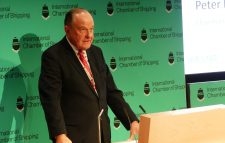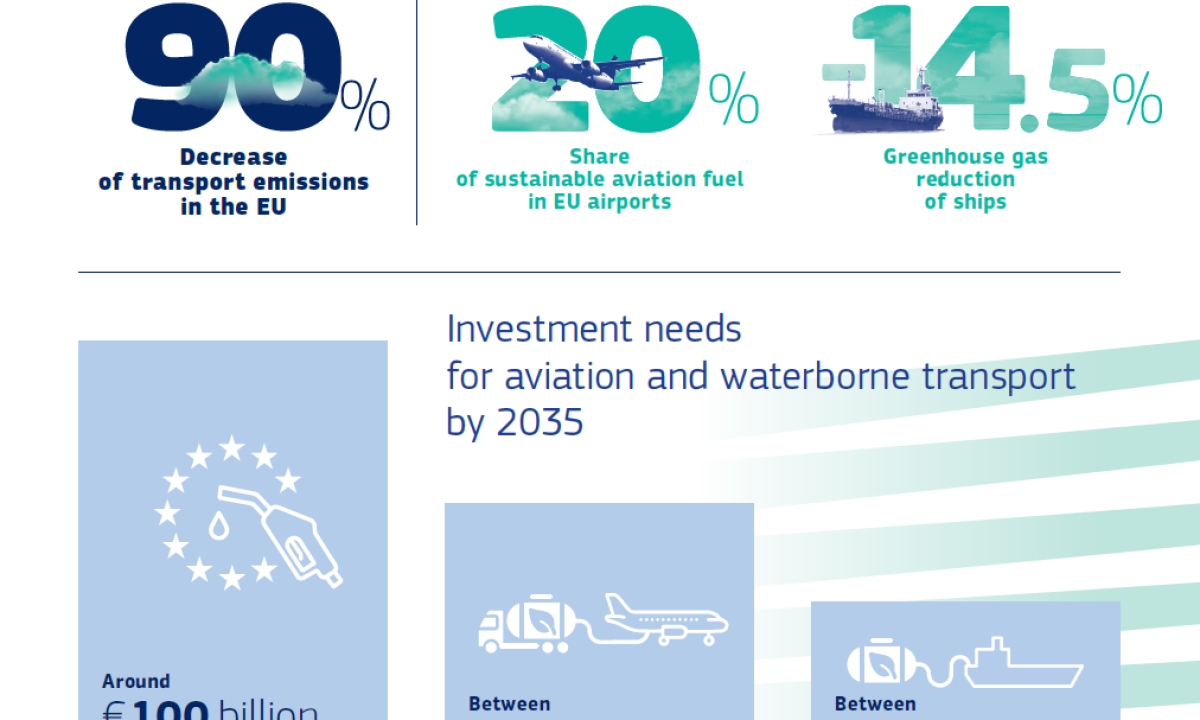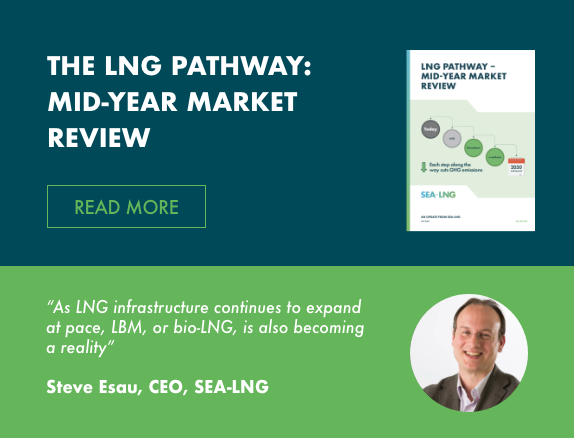12th September 2019
SETTING COURSE FOR 2050: POWERING GLOBAL TRADE SEA-LNG PRESENTS AT ICS CONFERENCE 2019

SEA-LNG is proud to have taken part as a panellist and Gold Sponsor at the International Chamber of Shipping’s 2019 conference during London International Shipping Week.
The panel, The Economics of Change, explored the changing dynamics of global trade with regulatory challenges, emerging technologies, and the need to address climate change having significant impacts on all aspects of business and politics. The conference was opened by IMO Secretary-General Kitack Lim, who in his address reiterated the importance of complying with the swiftly upcoming 2020 sulphur reduction targets and the inevitability of further GHG emission reductions.
SEA-LNG Chairman Peter Keller took part in the panel discussion chaired by The Guardian’s Environmental Correspondent, Fiona Harvey. He was joined by fellow panellists The Baroness Bryony Worthington, Mr Emanuele Grimaldi, Prof. Anders Hammer Strommann, and Lord Adair Turner of Ecchinswell. Discussion on the panel developed into an interesting debate primarily around the alternative fuels to reach zero-GHG emissions within the shipping industry.
Mr Keller’s opening speech on this subject was well-received – there is no magic elixir out there today which can address all of the industry’s fuelling woes. Instead, it is critical for the industry to focus on current solutions which drive onwards along a pathway to success. LNG is the most commercially viable fuel available today which can provide this pathway.
Consensus from the panel demonstrated that LNG was the only realistic option today, but other speakers remained wary of locking the industry into one solution without leaving the door open for future options, such as ammonia. However, “future” remained the critical term. Veterans of the LNG industry know only too well the time it takes to develop infrastructure to support the shipping industry on a global scale – and while LNG has recently overcome this challenge within the last five years, it will likely be decades before potential alternatives such as hydrogen and ammonia could establish the infrastructure necessary to realistically fuel the global fleet.
Meanwhile, LNG is continuing to evolve and map out a realistic development pathway towards 2050. Ongoing optimisation in supply chain and engine technology developments will further enhance the benefits of LNG as a marine fuel, and progress in utilising renewable feedstocks for BioLNG and Synthetic LNG also offer the potential for significant GHG emissions reductions. Reductions in renewable energy pricing, lower $ per MWhr on a scale beyond that envisioned recently – up to 80% in ten years, means that potential costs of synthetic fuels are falling rapidly too. SEA-LNG has recently commissioned work to evaluate the potential specifically of bioLNG and Synthetic LNG.
The panel closed with Emanuele Grimaldi praising the industry on its significant technological advancements in the face of dramatic changes and tightening regulations. However far the industry has yet to go in achieving decarbonisation in line with the IMO’s 2050 targets, all can agree that the progress made thus far is a great testament to the shipping sector’s capacity for innovation.
Later in the day, during the final panel session, SEA-LNG discussed the issues further and the latest study that they have commissioned on Alternative Fuels. This study will be released on 17th September.
Please read below Mr Keller’s opening address at the ICS 2019 Conference.
Thank you and I am honored to join you here this morning and I look forward to an interesting and informative Conference.
These are both exciting and daunting days for shipowners. Many would also note this is really no different from most days in our business.
For decades the maritime Industry has been working to reduce its environmental footprint, especially in the area of air quality. Under the strong direction of the IMO, the sulfur regulations coming into effect January 1 will provide a positive boost to this persistent and global human health problem. It may not be the ultimate solution to air emission issues, but a positive and monumental step forward.
We read about the challenges that the shipowners face every day with compliance. Every day we also read about yet another possible solution as the Industry moves forward to implement these new guidelines. The concerns surrounding availability of compliant fuel, compatibility, and yes, cost, will all be resolved in due time. The Industry has a long and positive history of ultimately addressing and solving often difficult and perplexing issues.
The industry is at its best when it acts as opposed to when it sits. Just think about Mr. McLean and other containerization pioneers.
What would our world look like had they not acted and moved ahead?
The best solution for our air quality concerns is LNG as a marine fuel. Few can debate the long term benefits of drastic sulfur reductions, nitrous oxide reductions and near elimination of particulate matter.
It is encouraging to see that more and more shipowners are acknowledging the importance of this clean fuel in their new build programs. We believe this will continue as the Industry continues its commitment to air quality and environmental change.
Because of the scope and importance of the International maritime structure within our global economy, as well as the variety of views and interests it must accommodate, change needs to be defined in terms of a marathon, not a sprint.
Yes, we sprint to the finish line just as we are doing with the sulfur cap, but we have been many years in preparation to build the consensus essential for successful change.
The same is true for other important changes such as the IMO targets for carbon reduction.
These are critical changes but they must be accomplished in a thoughtful manner with an eye to real solutions that provide a pathway to long term success, not anecdotal 10 second sound bites which are so popular today.
What then of the new challenges of carbon? Again, it will be a marathon, perhaps multiple runs around the 26.2 mile course, before we reach our targets and ultimate goals.
There is no magic overnight elixir or potion that we can take to change the 50-60,000 deep sea vessels traveling our oceans every day. Further, the importance of International trade to our national and global economies is not lost on any of us. The world is a much smaller place and, I believe, certainly better for our interdependence. There is also no turning back as some might suggest.
Shipping (and aviation) are often criticized for not being included in the UN Climate Change Paris Agreement of 2016, yet the action taken by the shipping industry, in the three years since this global agreement, has demonstrated very positive momentum and significant improvements in reducing GHG emissions per mass or volume of cargo moved.
This industry can and should be proud of accepting its climate change responsibilities and for enacting legislation, via the IMO, that has seen it make greater progress towards climate targets than many of those who actually did sign in Paris.
From being viewed by many as dirty polluters, the maritime industry has worked diligently to go green and be seen to be green.
This opportunity is also just plain good business. The commercial penalties associated with not understanding the ultimate consumer (our wives and families) or of not complying and investing ahead of impending legislation will only rise. Not taking action will lead to a loss of competitive advantage and worse.
One obvious roadway to maritime carbon reduction is LNG. Perhaps not the one fuel for a zero-carbon future, but it does move us in the right direction. It is available and scalable today, not decades away. SEA/LNG analysis suggests well to wake reductions of upwards of 21% and tank to wake reductions up to 28%. This combined with the air quality benefits makes a compelling case for LNG’s usage as the preferred maritime fuel today and into the foreseeable future. It is also a proven and safe fuel with a fast growing bunkering infrastructure
While many may and do argue for the ultimate solution, which none of us can really describe in real operational terms, we risk more damage due to inaction. There comes a time when waiting for perfection is no longer practical nor appropriate. Waiting for technology to make potential fuels such as hydrogen, ammonia or even batteries viable as a deep-sea maritime alternative, where 70% of shipping operates, is just not a solution. It is, regrettably, not action!
What then is action?
In my view, it is moving with the best and safest we have and then adjusting as markets and technologies change and evolve. This is how we run successful enterprises. We choose a path, move diligently and adjust as necessary.
For maritime fuels that means LNG now for positive air quality benefits and a significant contribution to carbon reduction followed by additional introduction of Bio LNG, which is being actively developed on a broader scale, and then potentially synthetic LNG.
The infrastructure currently being developed will be future-proofed. It will be more than useful for generations of vessels. Most importantly we move the needle forward, NOW, not decades from now.
As technologies change the maritime industry will do what it has always done, change and adjust as is necessary. I am also encouraged to see so many of the Industry leaders looking at alternative fuels and technologies and welcome the EEDI and other initiatives that we know are coming from IMO.
Looking for a moment at those industries that work with shipowners and impact our business through design, engineering, data and a myriad of other services, there are huge and exciting opportunities for general improvement, operationally and environmentally.
If we are about to track hundreds of thousands of cars on congested roads, surely, we will soon see the global tracking of sixty thousand major ocean vessels.
Minimizing port delays and congestion and optimizing vessel operations in support of more efficient global supply chains will result in reductions of GHG emissions. Data and optimization techniques will continue to play a critical, ever-expanding role in our activities. Improvements will continue to come in increments, but at the end of the day provide powerful cumulative results.
Waiting for the ultimate and perfect solution is not an option. Standing on the sidelines is not an option. Dreaming about technologies that will take decades, if ever, to perfect is not an option. The maritime Industry’s best solution is to follow the path we have followed to get to IMO 2020, and as our exercise shirts say “JUST DO IT.”
I believe that means continuing to embrace LNG as an important and currently environmentally superior fuel for our deep-sea vessel newbuild programs, while working diligently with our partners to make regular positive strides and improvements. It also means we cannot stop the drive for perfection and ever better solutions through changing and emerging technologies, whatever they may be.
Thank you



